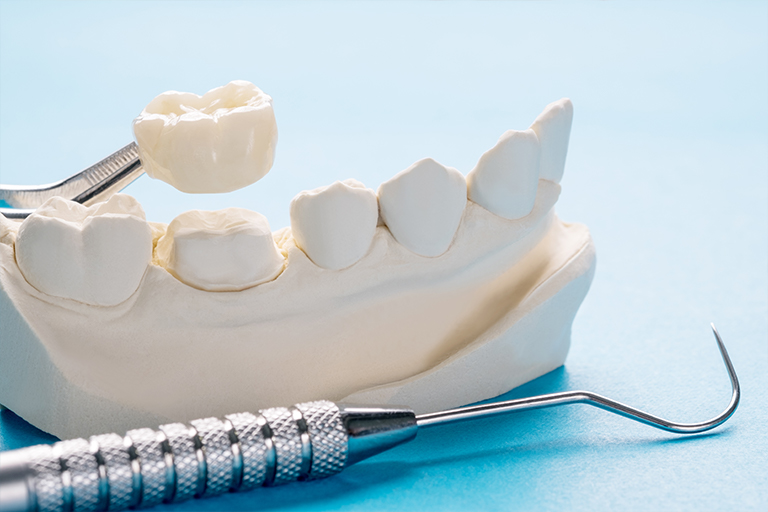
- Home
- About
- Our Team
- Services
- Postoperative Care
- Smile Gallery
- Medical Tourism
- Blog
- Offers
- Contact Us
- Home
- About
- Our Team
- Services
- Postoperative Care
- Smile Gallery
- Medical Tourism
- Blog
- Offers
- Contact Us

Dental crowns are cap-like structures used to restore damaged teeth. These are considered one of the best replacements for stained, disfigured, and decayed teeth. Most of the time these cover the root canal-treated teeth and are also used in combination with implants and bridges. These can be fabricated either in the dental office or in the laboratories. An impression is made to suit the size of the patient’s tooth following which a temporary crown is placed until the permanent is made and luted in its position.
Along with a proven track record of crown-covered restorations, these have also witnessed technological advancements, especially in the material used.
Different types of crowns
Based on the material used to fabricate crowns these can be broadly categorized into metal, ceramic-metal mix, and full ceramic crown.
The metal crowns are preferred for lower costs but these are not satisfactory when it comes to aesthetics and hence are not indicated in the front teeth region.
The ceramic-metal mix crowns are the most common ones and are traditionally used. The main reason for their common usage is that these are affordable but along with lower costs these also have some disadvantages which are the unaesthetic appearance, discomfort, and allergic reaction in some cases. The main reason for the unaesthetic appearance is the visible metal band following the gumline.
The two types of crowns under all ceramic categories are the Zirconia and E max crowns, E max being the most recent advancement in crown material.

What are Emax crowns?
These are preferred because of better esthetics and comfort and are the most expensive crowns. These are translucent which enables to achieve a shade or color closest to the natural color of the patient. Since no metal is used the anesthetic metal band is not visible here. The use of ceramic also eliminated the chances of allergic reactions.
The thickness of the material used here is reduced in comparison to metal ceramic mix crowns which means that there will be less reduction of the natural tooth structure. This characteristic is advantageous in cases where there is less space between teeth. Therefore, these crowns are widely used to fabricate crowns and veneers for anterior or front teeth where the esthetic expectations are high. These are considered an ideal choice for short-span bridges.
Difference between Zirconia and Emax crowns
Zirconia crowns are also preferred over ceramic metal mix crowns due to the above-mentioned characteristics. But the Emax crowns are preferred over Zirconia as these offer better strength.
So, the E max crowns, along with the good properties same as zirconia, also possess better strength as the ceramic metal mix crowns. Moreover, it is resistant to chipping, unlike zirconia crowns.
The material used in Emax crowns is made from lithium disilicate ceramic. It is a durable material, mainly harvested for its durability and translucency.

Bottomline
To conclude, Emax crowns provide you the aesthetics like a natural tooth, are durable, and possess good strength. The only drawback with these crowns is their cost, but it is worth spending extra money!!!